Manage my passport? What's to manage, you may be thinking. Well, nowadays there are lots of…
November 21 Travel News Review…
Covid-19 again takes center stage in travel news. There is so much news regarding the plague that I have written a dedicated post just on this topic. Many of the stories below are Covid-related but in this dedicated post, Covid Updates, I am focused on topics such as the future of vaccines, quarantine and testing requirements for travel in the U.S. and a general look at the future of travel in the Covid Era.
Airlines and Air Travel
Blocking Middle Seats. Despite research showing that the practice doesn’t significantly prevent Covid-19 transmission, many airlines have done so anyway if for no other reason than it makes some passengers feel more comfortable. If you don’t sell seats, you don’t survive so I understand their thinking but, with the exception of Delta, that is quickly changing.
Some airplanes don’t have middle seats, so blocking seats becomes a challenge. For instance, the short-haul Embraer ERJ-175 that American flies from my home airport of Sarasota uses a two-two configuration.
Up until now, Alaska, Delta, Hawaiian and Southwest have all been blocking middle seats. American, United, Jet Blue, Frontier, Spirit and Allegiant have consistently sold all seats or flew at reduced capacity without blocking specific seats. Here are their current policies and when/if they are changing:
- Alaska will continue to block middle seats and limit the number of passengers through January 6, 2021.
- Although Allegiant established more stringent cleaning protocols, they never blocked middle seats.
- American is another airline that never blocked middle seats and instead touts their “Clean Commitment.”
- Delta is probably the best known for blocking middle seats and announced on Wednesday that they will continue this practice through March 30, 2021. As their press release noted, “…blocking seats into spring 2021 provides added confidence and reassurance for customers.”
- In addition to more aircraft cleaning, Frontier has been doing temperature checks since June 1 but hasn’t blocked middle seats.
- Hawaiian currently blocks the middle seat and has not announced a date for discontinuing that practice.
- In a letter to crewmembers, Jet Blue cited studies by Harvard, the Department of Defense and the International Air Transport Association (IATA) to announce that starting January 8, 2021, they will make all seats available for sale. In addition to blocking middle seats, Jet Blue had limited overall capacity.
- Flying on Southwest is a little different since they don’t assign seats, but other than groups of three or more, they have blocked middle seats and will continue to do so through November 30, 2020.
- Not surprisingly, other than the announcement of their mask and cleaning policies, I could find very little information regarding Spirit’s Covid-19 response.
- United is one of those that has instituted a testing regimen for Hawaii and some international destinations, but has not restricted middle seat occupancy. Like the other majors, they have waived change fees should you decide the flight is too full for your comfort.
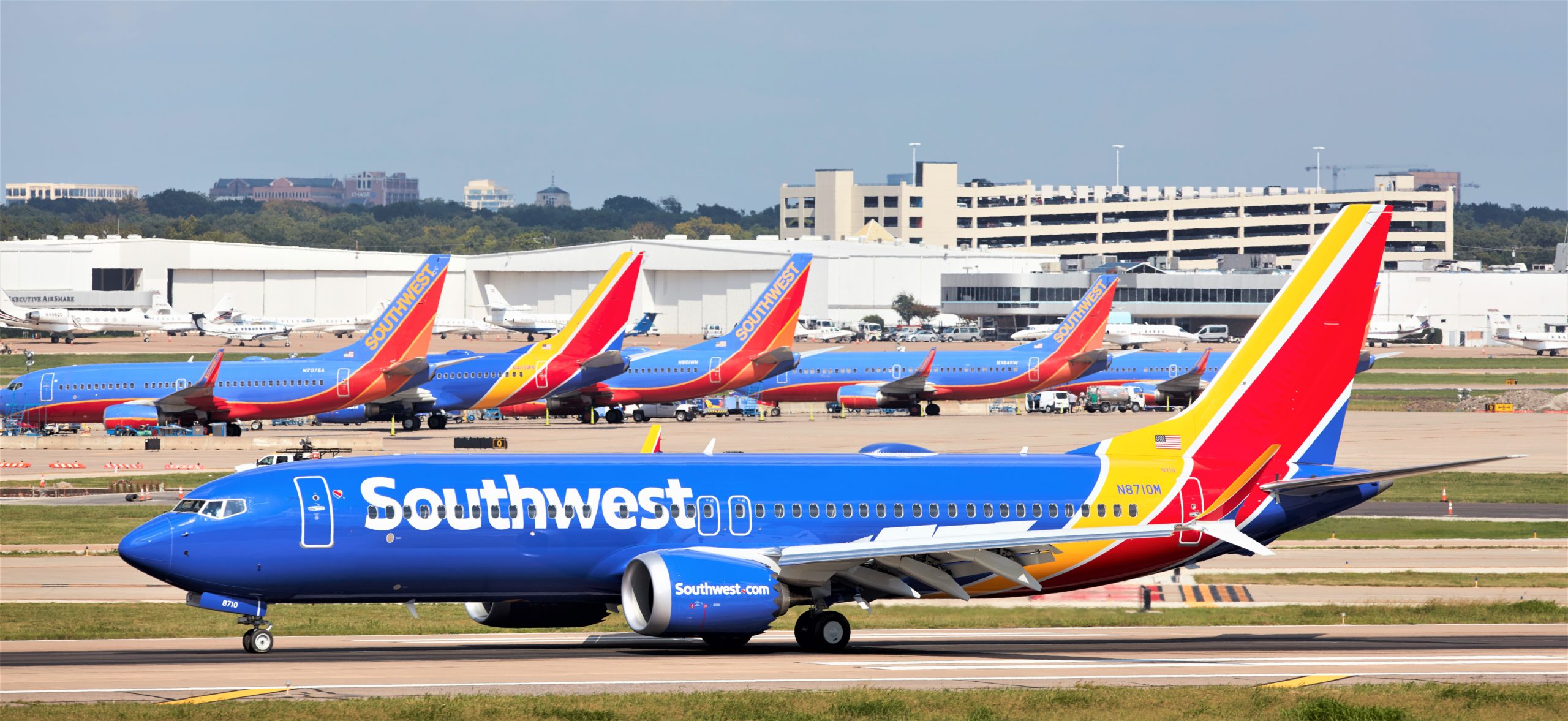
The 737 MAX is (Almost) Back. The Federal Aviation Administration (FAA) announced on Wednesday that the Boeing 737 MAX is nearing a return to the skies. In addition to rescinding the grounding order, the FAA published an Airworthiness Directive specifying design changes that must be made before the aircraft returns to service.
The FAA must approve 737 MAX pilot training program revisions for each U.S. airline operating the MAX and will retain its authority to issue airworthiness certificates and export certificates of airworthiness for all new 737 MAX aircraft manufactured since the FAA issued the grounding order. Furthermore, airlines that have parked their MAX aircraft must take required maintenance steps to prepare them to fly again.
The two U.S. airlines with the largest number of the 737 MAX are American with 24 and Southwest with 34. American has 2,600 Boeing 737 pilots and intends to begin working the aircraft back into the schedule on December 29, 2020, while Southwest is estimating their fleet won’t resume flying until the second quarter of 2021.
Public comments still need to be reviewed and the FAA still needs to review the findings of regulators in Brazil, Canada and Europe (the Joint Operations Evaluation Board) before issuing a final decision. FAA administrator Steve Dickson said he “liked what I saw” after taking an updated MAX for a 40-minute flight out of Boeing’s Payne Field north of Seattle on Wednesday.
“At the end of the day I’m a pilot,” said Dickson after the flight. “It was important to me to experience first-hand the training and the handling of the aircraft so I could have the most complete understanding possible as we continue to move forward with this process.”
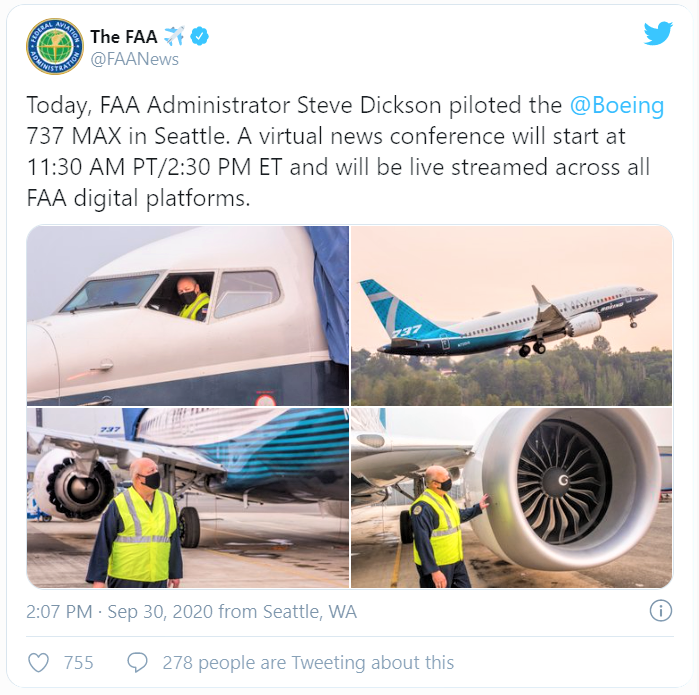
Norwegian Air Declares Bankruptcy. The government of Norway has decided enough is enough and has declined to bail out the cut-rate airline again. At one point there was discussion about nationalizing the airline but that went nowhere. Norwegian Air is now seeking bankruptcy reorganization in the Republic of Ireland because that’s where their assets are held.
“Seeking protection to reorganise under Irish law is a decision that we have taken to secure the future of Norwegian for the benefit of our employees, customers and investors. Our aim is to find solutions with our stakeholders that will allow us to emerge as a financially stronger and secure airline,” said Norwegian CEO Jacob Schram.
Korean Air Buys Asiana Airlines. South Korea has ten passenger airlines, most of whom you’ve never heard of unless you’ve flown in the region. Air Busan, Hi Air and Fly Gangwon, for instance, are hardly household names.
Now the two largest, Korean Air and Asiana Airlines, are in the process of becoming one as Korean is purchasing debt-strapped Asiana. According to the Korea Herald, this merger will create the world’s tenth-largest airline in terms of fleet size.
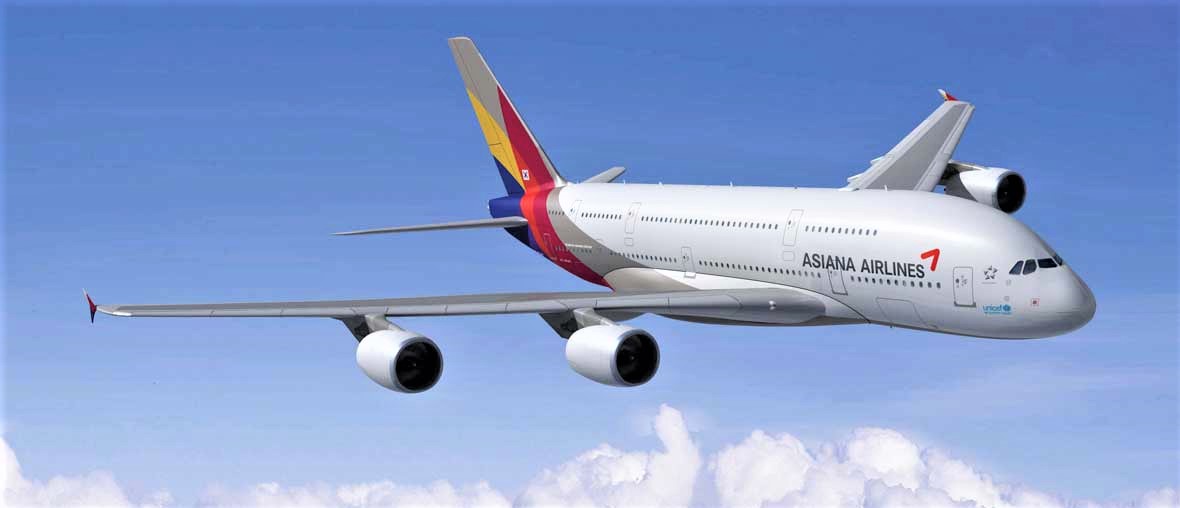
Korean Air Chairman Cho Won-tae said the goal of the $1.6 billion purchase was to minimize public funding of Asiana while providing job security for current employees. The plan includes integrating three low-cost subsidiaries in order to reduce costs: Jin Air (Korean Air), Air Busan and Air Seoul (Asiana).
No announcement has been made as to what name the combined airlines will use or if they will continue operating under separate names, but I assume Asiana will cease to exist and eventually be rolled into the dominant airline.
Another likely change is Asiana’s withdrawal from the Star Alliance because Korean is a member of the SkyTeam alliance. This is potentially good news not just for Star Alliance members, but Delta specifically since they already have a joint venture with and own 10% of Korean.
All of Asiana’s airport slots will now belong to Korean who will either expand their global reach or sell redundant slots to raise cash. For example, both airlines fly into Seattle, Los Angeles, Honolulu and San Francisco but only Asiana flies into New York’s JFK; the merged airline will likely reduce the surplus slots they will collectively own but keep those at JFK.
Airline mergers present an opportunity for The Points Game participants. The Korean Air Skypass credit card is offered by US Bank while Bank of America offers the Asiana card; both cards offer 30,000 bonus points after a $3,000 spend within three months.
Both cards also have a business version. Since they are issued by different banks and the Asiana card likely won’t be around much longer, it might be worthwhile to apply for both Asiana cards now so you’ll already have 60,000 points when the merger is completed. I did that with the US Airways cards when they were absorbed by American and the points transferred to my AAdvantage account.
Business Travelers Rate Delta #1. For the tenth year in a row, Delta Airlines has been rated the number one carrier in the Business Travel News annual survey. While many metrics, including customer service, improved for most airlines, Delta still reigned supreme.
In terms of the response to Covid-19, Delta scored highest in overall Covid-19 Response, Communication and Account Flexibility on a five-point scale. Outside of Covid-19 issues, the top four airlines’ average scores in 13 categories are as follows:
- Delta — 4.59
- American — 3.94
- United — 3.91
- Southwest — 3.88
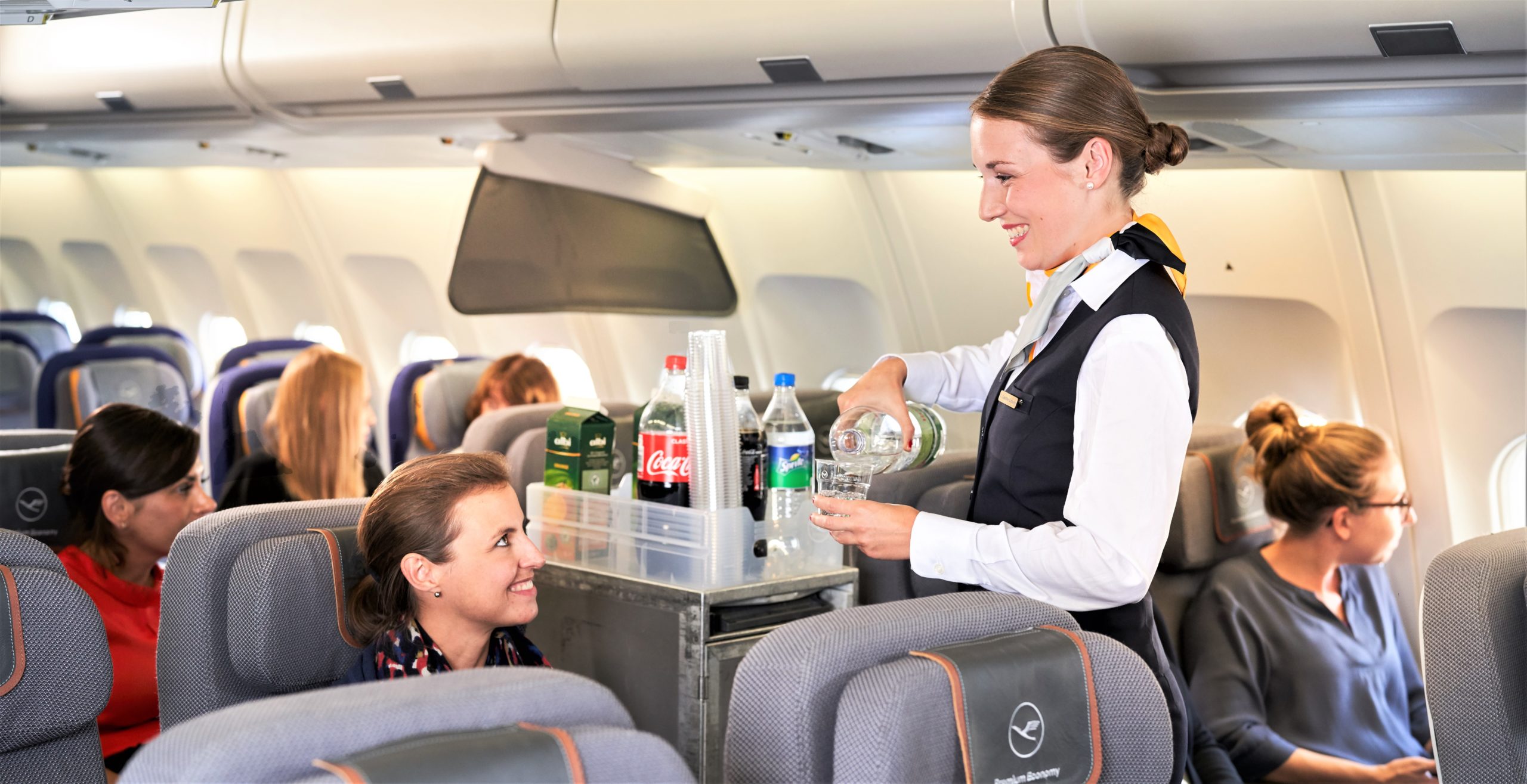
Airlines Going the Paid Snack Route? Many cut-rate airlines, especially in Europe, have always had a buy-on-board plan for snacks and drinks. Except on long-haul flights, you pay separately for food and drink or bring your own. Now the Lufthansa Group, which includes Lufthansa, SWISS and Austrian Airlines, is moving towards the same model for short- and medium-haul flights in economy beginning in the spring of 2021.
I have to admit I pretty much assumed all airlines offered free coffee, soft drinks, water and munchies until I took a Spanair flight from London’s Luton airport to Malaga, Spain in 2002. They brought around a cart with everything from sandwiches, candy bars and chips to beer, soda and water, all for sale. No freebies.
I actually thought that was pretty cool since the variety of offerings was much greater than other airlines and I paid a pittance for our tickets. With virtually all airlines cutting back on their aisle service due to Covid, will this be the future for economy fliers going forward? I think it makes sense and the airlines will find a way to make it a selling point rather than a negative.

American Moving Forward. Betting on a continued increase in flying, American Airlines has now opened 24 of its Admirals Clubs in 20 different airports.
American is my go-to airline and I have the Citi AAdvantage Executive card that includes access to the Admirals Club lounges when flying on American, so I’m pretty happy. If you’ve got a layover of two or more hours, it’s nice to have a comfortable, quiet place to hang out with free drinks and food.
In additional American news:
- Alaska Airlines and American continue to enhance reciprocal services such as lounge access, seat upgrades, priority check-in and baggage services.
- No more change fees. Unfortunately, we had to cancel a December trip to Colorado Springs and my points were immediately credited back to my account without a mileage reinstatement fee. American has eliminated change fees for all classes except Basic Economy.
- American, the oneworld alliance and British Airways are launching a transatlantic Covid-19 testing trial.
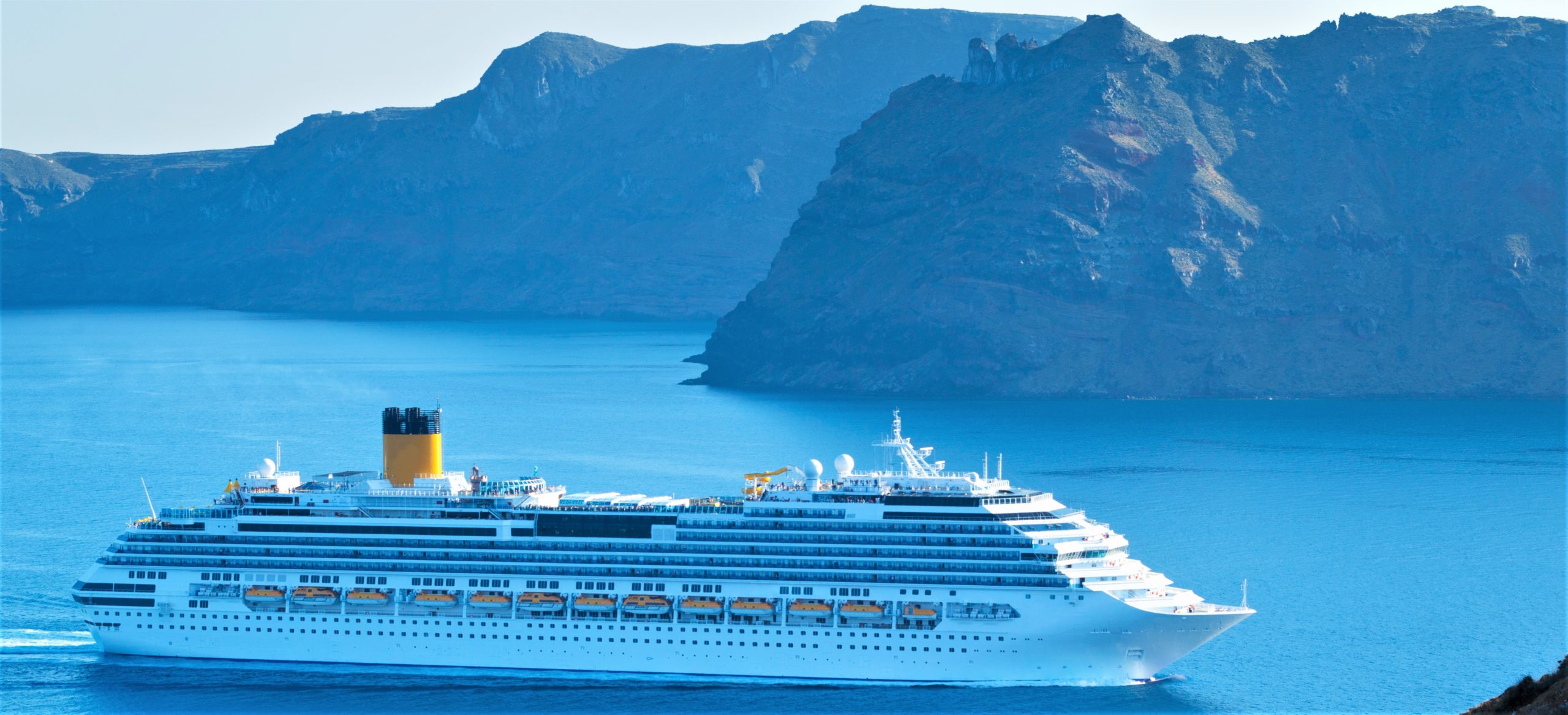
Cruising
I think there is a feeling amongst some that cruising is a luxury travel product and don’t see the need for cruising to resume, when in fact there are versions to appeal to every vacation level from basic to ultra-luxury. Additionally, there are a lot of jobs at stake. I reported on November 6 that the cruise industry had already lost more than $25 billion and over 164,000 jobs.
Now, a Cruise Lines International Association (CLIA) study projects 2020 losses of $32 billion and more than 254,000 American jobs. Those numbers include ancillary jobs in lodging, manufacturing, agriculture, aviation and a whole host of suppliers and service industries.
Can the cruise lines return to the seas safely? Richard Fain, CEO of Royal Caribbean Group said on the company’s earnings call on October 29 that, “We do believe it is possible to make it that you are safer on a cruise ship than you are on ‘Main Street’.”
CLIA members (representing 95% of cruise ship capacity worldwide) have agreed on 100% testing of passengers and crew on all ships with a capacity to carry 250 or more persons before any embarkation.
Read related: Cruise Industry Still Scrambling
More Cancellations. Following a Caribbean cruise that ended with seven Covid-19 infections, SeaDream Yacht Club has canceled all cruises through the end of the year according to Travel Agent Central. The small-ship cruise line initially earned praise for its testing procedures but was later criticized for not enforcing a mask rule.
SeaDream Yacht Club does not fall under the Centers for Disease Control Framework for Conditional Sail Order because they cruise outside of U.S. waters.
Carnival Cruise Lines also announced a reduced schedule during the first quarter of 2021. Carnival Cruise Line notified guests and travel agents that it has canceled additional cruises for the first part of 2021, including:
- All embarkations from U.S. homeports from January 1-31.
- Additionally, Baltimore, Charleston, Jacksonville, Long Beach, Mobile, New Orleans and San Diego embarkations through February 28.
- Embarkations on Carnival Legend out of Tampa through March 26.
Carnival is in the process of building a gradual, phased-in approach to resume guest operations, which will focus initially on Miami and Port Canaveral, to be followed by Galveston.

A New No-Sail Order? The upshot of the SeaDream infections has been that two members of Congress have called on the CDC to issue a new no-sail order. Quoted in Travel Weekly, a letter from the legislators said, “Unfortunately, this troubling development is not surprising and reaffirms the need to exercise extreme caution before sending passengers and crew back out to sea on cruises.”
The letter to CDC Director Robert Redfield also noted the skyrocketing number of Covid cases across the U.S. as a reason to again halt sailing. I agree that should be a consideration but to be fair, the SeaDream is not representative of the cruise industry as a whole. Masks were not worn until there were already positive tests and the CLIA rules require mask wearing in all public spaces.
Meanwhile, CLIA members continue working on completion of ship-by-ship trial cruises, integrating the required safety and health protocols and setting up Covid testing labs on every ship. Battling infectious diseases is not a new challenge for the cruise lines and having labs on board will only help with the next wave of flu or other bug that comes along in the future.

Royal Caribbean Restarting in Caribbean. Fittingly, Royal Caribbean will get back to business in their namesake region, the Caribbean. In an interview on Cruise World’s weekly broadcast, Royal Caribbean Group CEO Richard Fain said that Royal’s ships will make every effort to return to the full Caribbean as soon as possible.
Many other cruise lines will be starting out only at their private destinations, primarily private islands in the Bahamas.
Fain expressed a desire to support the economies of the Caribbean nations they have partnered with over the years. Royal ships first sailings will be to their private destinations, Perfect Day at CocoCay in the Bahamas and Labadee, Haiti, with Fain calling it Royal’s “good fortune” to have invested so much in those private destinations before the pandemic. “But then we’ll begin to expand it,” he said.
As mentioned above, all cruise ships are required to conduct trial voyages. Royal opened-up the opportunity to be a trial cruise guinea pig by signing up to be considered on their Volunteer of the Seas Facebook page or at this Link. Yes, I already signed up (fingers crossed).
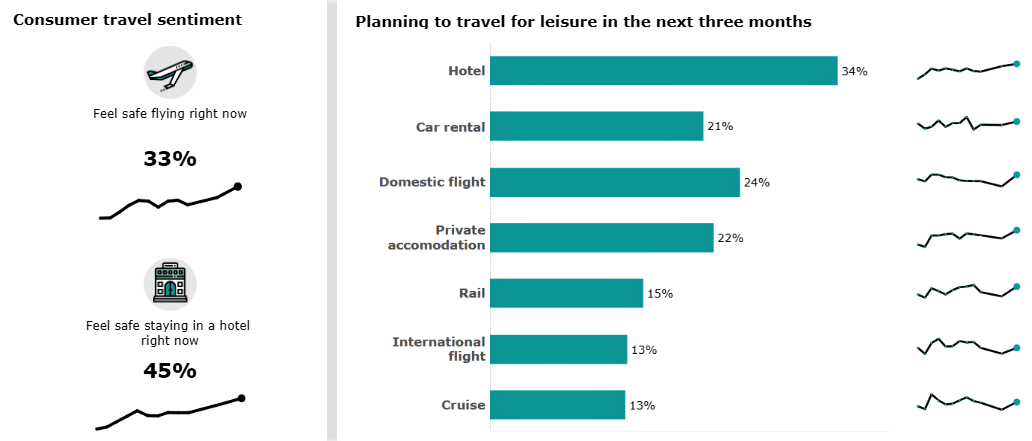
This and That
Deloitte consulting has begun a monthly report that tracks consumer sentiment in the Covid-19 era. The survey across 15 countries hopes to track when consumers will feel safe enough to return to work, stores, theatres, restaurants and travel, along with when they expect to return to old behaviors (if ever).
The State of the Consumer Tracker survey conducted in 18 countries from October 29 – November 5 contains a Global Anxiety Index, a Health and Financial Matrix, a section on various consumer products and a Travel and Hospitality analysis. While each area is interesting, I’ll just touch on the areas related to travel and only for the roughly 1000 surveyed in the U.S.
Data is broken down by age group (18-34, 35-54 and 55+). As you might imagine, the youngest feel the safest flying now (36%) while the oldest (28%) are more reluctant to fly. Scores were higher across the board for staying at a hotel, but still reflected a stronger sense of safety amongst the younger respondents. The numbers have steadily increased since the first survey conducted in April.
When it comes to finances, Deloitte focused on concerns about making upcoming payments and whether or not those surveyed are delaying large purchases. The younger group was definitely more concerned about making their payments and delaying purchases (46% and 48%, respectively) while the older age group must be feeling fairly sound financially (registering 10% and 24%).
Both of those financial indices have an impact on travel, especially for cruises and international trips. Interestingly, those numbers have not changed appreciably since the July survey. In terms of travel plans for the next three months, the overall U.S. response is reflected in the graph above.

As an avid traveler, Brian has explored and enjoyed cultural encounters in over 40 countries while spending many years refining The Points Game — using credit card sign-up bonuses and other tricks to get nearly free travel. Getting the most out of every trip is an art and Brian launched My Travel Traxx to help others enjoy the art of travel.

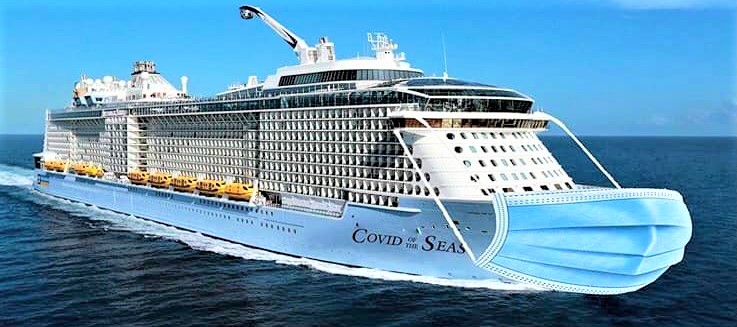
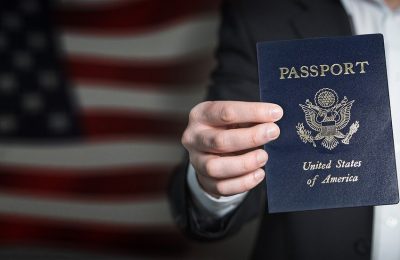
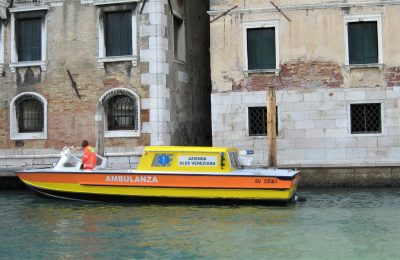

Comments (0)